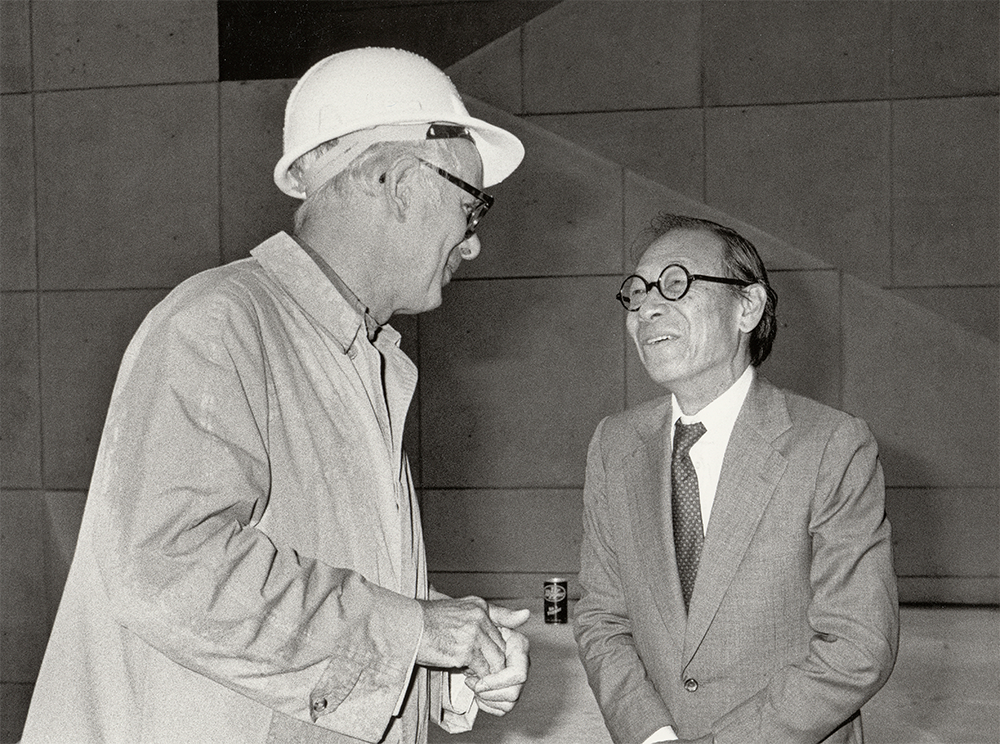The Sidney and Lois Eskenazi Museum of Art and the entire Indiana University family mourn the passing of I. M. Pei, the renowned architect of our building. Unquestionably one of the most important architects of the 20th century, Pei is internationally celebrated for iconic designs that include the pyramid of the Louvre Museum in Paris and the East Building of the National Gallery of Art in Washington, DC. The Eskenazi Museum of Art, Indiana University, and the city of Bloomington are fortunate to be a part of Pei’s legacy.
The Eskenazi Museum of Art (then known as the Indiana University Art Museum) was established by legendary IU president, Herman B Wells, and Henry Hope, the first head of the university’s art department, in 1941. Together they devised a roadmap for creating a world-class art museum, which included collecting works from around the world and from all periods in human history. With the construction of the Fine Arts building in 1962, the university provided a gallery space for the display of the growing collection. As the collections grew in number, but, more important, in quality, it became increasingly clear that gallery space within the Fine Arts building would not be adequate and the university would need a dedicated museum building to properly house its burgeoning art collections. In 1971, Hope retired as museum director and was succeeded by Thomas T. Solley. In 1973, Solley and the university contracted Pei to design a building dedicated to housing the art collection. Pei’s design for Indiana University, which was completed in 1982, gave the university not just a great museum, but also a major example of modern architecture that is itself a work of art.
More than 75 years after its founding, the museum’s internationally acclaimed collections comprise more than 45,000 objects, making it one of the largest art holdings of any American university art museum. The collections range from ancient gold jewelry and African and Oceanic art to works by modern masters such as Pablo Picasso and Jackson Pollock, with objects representing nearly every art-producing culture throughout history.
In 2016, Indiana University announced a major gift from Sidney and Lois Eskenazi that helped fund a full renovation of the museum, which was completed this year. In honor of their gift, the museum was renamed the Sidney and Lois Eskenazi Museum of Art, marking the beginning of a bright and bold new chapter for the arts at Indiana University.
The Eskenazi Museum of Art’s $30 million renovation has made significant efforts to preserve the original building design, coordinating with architects to renew Pei and Solley’s vision of the museum as a major teaching institution for Indiana University. The renovation includes expanded gallery space, and four new centers focusing on the areas of conservation, curatorial services, education, and prints, drawings, and photographs. Additionally, the museum has a new lecture hall, re-envisioned front and rear entrances, a third-floor sky bridge connecting the two wings of the museum, and expanded technology and visitor services throughout the building.



